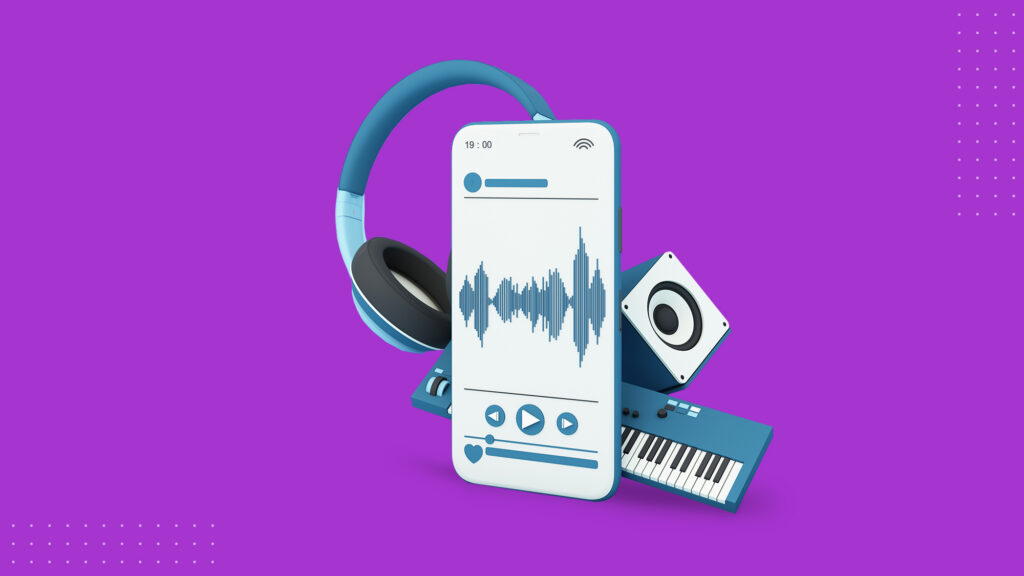Audio by Ben D. using WellSaid Labs
Dive into an extract from our white paper, Make Generative AI Work For You, Using Digital Scalable Voice. Here, we explore the intricate dynamics and potential of generative AI in the business ecosystem.
Interested in the full discussion? Download the white paper here!
In an era dominated by omnichannel experiences, businesses are constantly seeking innovative ways to offer seamless and unified brand interactions. Sonic branding, powered by generative AI and synthetic voiceovers, is rapidly emerging as a key component in this mix. Dive into the transformative impact of integrating sound into your omnichannel strategy.
💡Discover editorial’s picks for WellSaid Avatar voices
Defining omnichannel
TechTarget defines omnichannel as, “an approach to sales, marketing and customer support that seeks to provide customers with a seamless and unified brand experience, regardless of which channel they use. The organization’s distribution, promotion, and communication channels are well-integrated in the back end, so regardless of whether the customer is shopping online from a desktop or mobile device, by telephone or in a brick-and-mortar store, their experience will be seamless and consistent.”
Deep dive into sonic branding
Many companies leverage Sonic Branding as part of their omnichannel strategy with great success. Companies like Progressive have a tagline such as “name your own price” and a unique character like their Flo, who has a distinct personality and voice. This complete set of brand identifiers sets Progressive apart from others and allows for multi-sensory brand engagement with their target audience.
From a visual standpoint, Progressive can enhance audience engagement by using their logo, brand colors, and Flo’s distinctive image. From a Sonic Brand standpoint, they use their tagline and Flo’s voice in marketing and tutorial videos as well as commercials and other advertisements.
These components make up the whole brand identity of Progressive, which can be incorporated across all channels of customer engagement. Combining audio and visual components in a multi-sensory experience increases viewer engagement, click through rates, and time spent watching or listening to content.
A new frontier in personalization
In addition to using an omnichannel approach for sales, marketing, and customer support, now organizations can leverage Generative AI to give even more customized experiences for their target audiences with programmatic personalization and localization. We have already begun to see targeted visual ads on our search engine and social media accounts based on the things we are searching for and talking about. But now, with generative content and voiceover, product leaders are starting to build targeted in-app audio ads and experiences that are relevant to each customer and personalized to capture attention. For example, companies have built AI-based radio DJs to give targeted and local advertising and information using GPT and AI voices like WellSaid Labs.
In a Business Insider report, “RadioGPT, a GPT-4-powered radio content generator from media company Futuri, is … powered by the same tech that ChatGPT draws upon, RadioGPT aims to man radio airtime spots with AI-generated scripts and voices, as well as tailored local news content.” In another example, fitness apps can offer custom workouts based on each user’s unique preferences with realistic voiceovers, saying remarks like, “Great work, Alex. Now let’s take it up a notch and increase the interval speed.”
The broader voice ecosystem
We can now use Generative AI and synthetic voiceover to build targeted advertisements and add personalization to existing products in a variety of industries. These are only a few examples of how Sonic Identity can be used in the complete voice ecosystem of an organization.
💡Learn more about Sonic Identity here
The myriad of avenues for sonic identity
In the following diagram we see how organizations can use synthetic voice to scale their operations in a variety of ways, increase communication, both internally and externally, and add value to end users while building trust. Voice is an integral part of every organization’s day-to-day operations.
There are a myriad of channels where this communication takes place, such as presenting information in a client or internal meeting, explaining the value and functionality of products in marketing and advertising, call center support for operational efficiency and customer satisfaction, corporate training for internal onboarding and external compliance, and even product features like podcasts, meditation sessions, and virtual assistants.
Imagine the full impact of a company investing in a unique Sonic Identity that personifies their mission and values – that also scales easily and is cost effective.
The table above shows the different touch points where Sonic Identity adds value throughout the customer journey. From the initial outreach and first touch points of prospect engagement to managing the relationship upon conversion, and even throughout the internal operational processes in between, using a unique AI generated voice enhances the omnichannel experience by providing consistency, and it’s a cost effective solution for scaling content.
Conclusion
As businesses transition to omnichannel strategies, the audio dimension becomes indispensable. Sonic Identity, underpinned by generative AI, not only amplifies brand consistency across channels but also offers a cost-effective and scalable solution. In an age where audiences crave personalized experiences, the future sound of business is here, and it’s harmoniously omnichannel.




